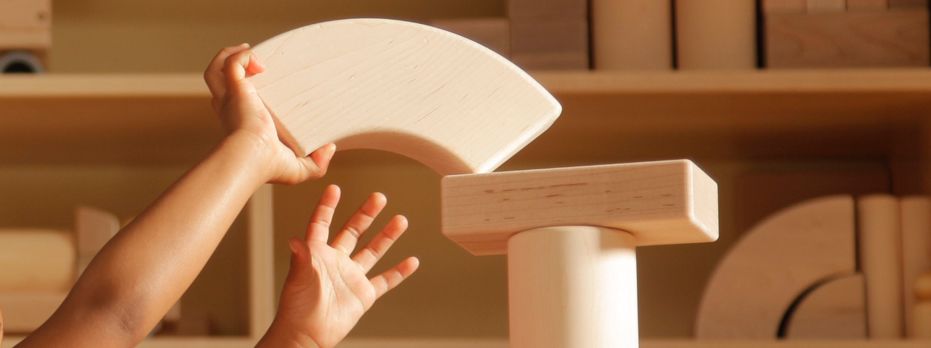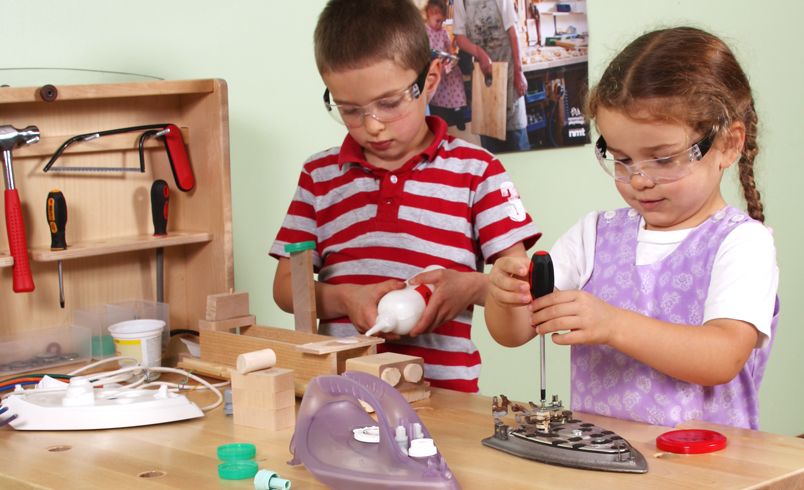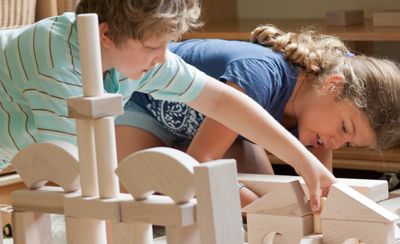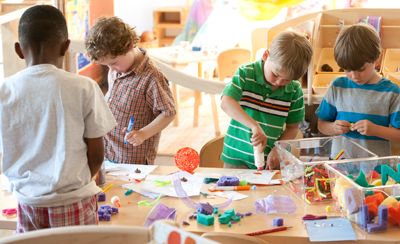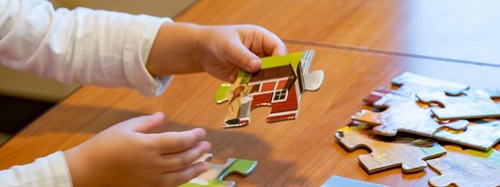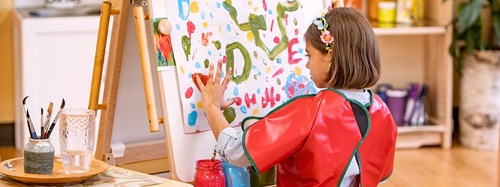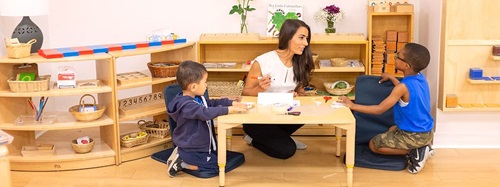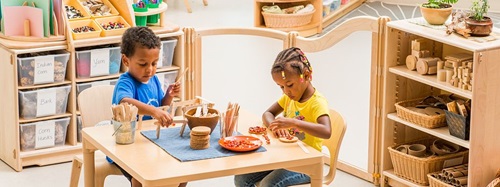Hands-On Learning
| March 2017As a self-taught educator, I’ve come to the realization that rather than focusing on reaching particular milestones, the purpose of early childhood education is nurturing exploration, problem solving, and excitement in learning. Through observation and experience I’ve seen children gain deep meaning out of experiential learning and I’ve found that this type of exploration is the strongest foundation for later education. I find myself saying things like, “I’m not interested in teaching our students specific skills based on a curriculum, but instead, in helping the children develop a deep love of learning.” Since each child develops at a different pace and is excited by different things, a hands-on, exploratory approach to learning meets the needs of each student where they are at developmentally.
This approach might be messier, more nuanced, and require more awareness and trust, but that’s precisely the reason to promote such learning. Everything we do with young children prepares them for the future, including learning how to surmount the messy and complicated. Hands-on experiences teach children concepts, but more importantly, they empower children to be problem solvers and critical thinkers, equipped with the tools to cope with the inevitable challenges and idiosyncrasies of life.
At a recent open house, I noticed that several parents were quizzing their children; asking, “See that bicycle, what color is it? What are its parts? What do the parts do? Do you have a bicycle? Where is it? What color is it?” I know these parents have the best of intentions, yet with this approach, it’s no wonder our children are full of anxiety and confusion about creative problem solving. Instead of allowing them simply to learn about the aspects of a bicycle through using one, falling down, getting up, and trying again, we inundate them with questions that they are neither interested in nor equipped to answer. A two-year-old who is allowed to experiment with riding a bike (safely and supervised, of course) will not only learn to identify its parts and their functions, but will also understand the joy of moving in space and controlling an object. This child will learn to brush herself off when she falls down and challenge herself to push against her own boundaries. These activities may not happen on our schedule, but that doesn’t change the fact that simply by doing, the child will grow and develop in a holistic way.
So how to begin? For many caregivers, offering a child hands-on experiences means letting go. Let go of self-imposed milestones and let go of controlling all aspects of the experience. At Bija, we make sure that we set up safe boundaries before activities are introduced. Then it’s up to the children! Our role as caregivers and educators is to support children through scaffolding (helping them when they need guidance to get to the next step) and intervening if something is dangerous. Otherwise, we watch as children make connections, discoveries, and learn to work both independently and collectively to build, create, solve, and play.
At home and in the classroom, children benefit from environments that are enticing, uncluttered, and familiar. Give children access to open-ended materials such as blocks, art supplies, doughs, and creative play items to help spark their imagination and the energy to try new things. Resist the urge to intervene and explain how things work. I’ve seen some of the most inspiring creations, the best teamwork, and advanced problem solving, when students are allowed to bring blocks to the art area, get materials dirty with paint, and build using everything within their reach. While less quantifiable than an interactive game on the iPad, just seeing the excitement and energy that these activities inspire is indication enough that little wheels are turning and connections are being made. This love of learning will support lifelong growth, success, and achievement.
Some Ideas to Get You Started:
Blocks, Blocks, Blocks
Put away the building sets that only work one way and take out simple blocks. These can be unit blocks, basic Lego sets, or even magna-tiles. These materials have endless possibilities and allow children to incorporate their own interests and imaginations into the process. They also learn about physics, geometry, architecture, and creative problem solving. When they choose to build something only to knock it down, resist the urge to express anger or disappointment—the knocking down is just as much a part of the learning process as the building up (set appropriate boundaries related to other people’s work, though).
Blocks offer children endless possibilities to explore and learn through hands-on play.
Garden, Kitchen, Woodshop
Engage children in work around the house or around the school. Participating in cooking, gardening, and cleaning are wonderful ways for children to learn by doing. Children have an amazing respect for tools when given an opportunity to use them. Whether an egg beater, knife, trowel, or broom, kids get engaged in the processes of life when given the chance! When introducing sharp or otherwise dangerous tools, make sure to explain and model safe usage and what is not allowed. You may be surprised how well children rise to the challenge.
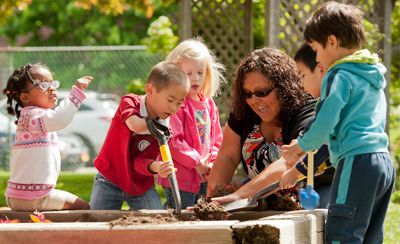
Children have an amazing respect for real tools and thrive when given opportunities to use them.
Art making
Create a space for making art whenever your child desires. Stock this space with accessible and easy-to-use materials. Avoid limiting how much your child can use at one time in this area (restrictions like “one piece of paper only” limit a child’s process). In addition to paper, crayons, charcoal, scissors, glue, and paint, bring in recycled materials (toilet paper rolls, bottle caps) and found materials (sticks, pinecones, rocks) for endless hours of hands-on learning!
Art is all about process, so don't limit the learning by restricting the materials.

